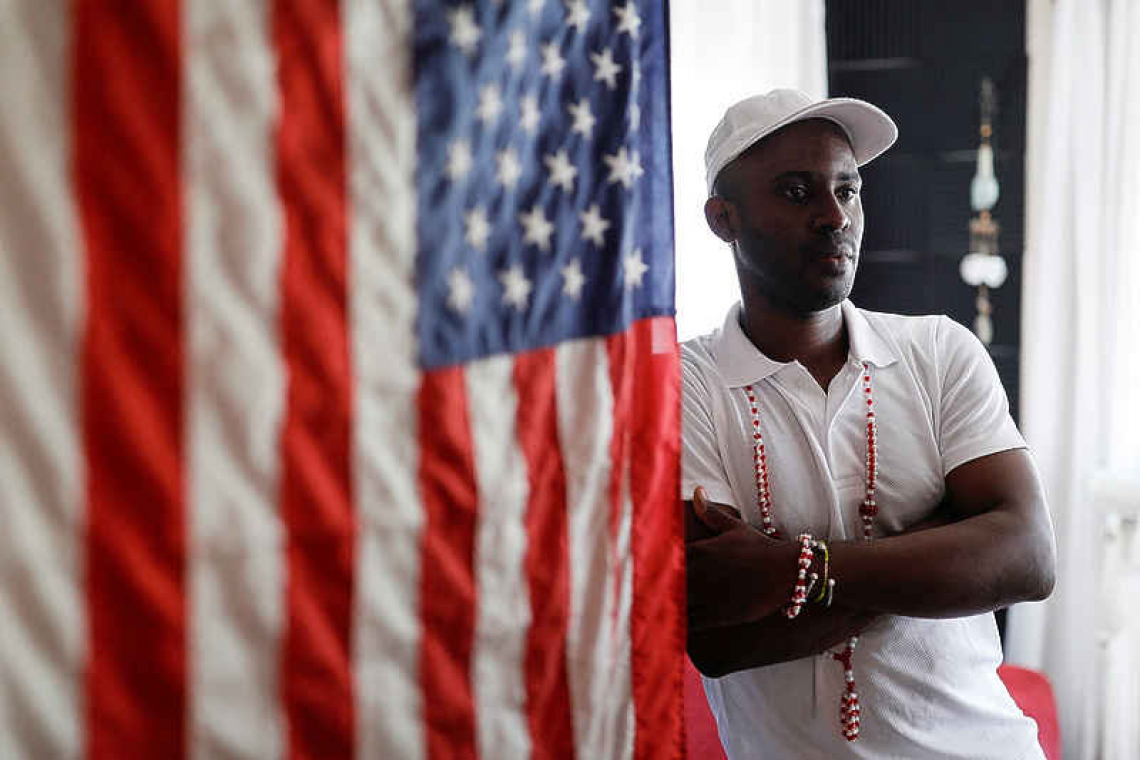Cuban reggaeton artiste Luis Alberto Vicet, known as “La Crema”, poses for a picture at his house near a US flag, in Havana, Cuba, on February 21. Photo credit Reuters/Amanda Perobelli.
HAVANA, Cuba--Bray Perez, a nineteen-year-old Cuban university student, is fast losing friends to a growing wave of migration off the island.
“Every time I go home, I find that 10 people have left,” said Perez, who studies in the capital Havana but hails from the nearby farm province of Mayabeque. “It’s hard to get up in the morning and know I’m not going to see them anymore.”
After Nicaragua lifted visa requirements for Cubans in November, many dropped everything, sold their homes and hopped a flight for Managua, with hopes of joining the mainland “migrant highway” north through Central America to the United States.
Nicaragua, a close regional ally of Cuba, said the move was intended to promote commercial exchange, tourism and humanitarian family relations.
But the initial fervour has been followed by frustration, chaos and even unusual protests at embassies in Havana as new hurdles have cropped up in recent weeks, according to interviews with immigration experts as well as migrants and their family members in Cuba.
The number of Cubans apprehended at the US-Mexico border nonetheless soared to 16,531 in February, the highest single-month total on record, according to US Customs and Border Protection data.
While most migrants from Mexico and Central America are turned back under a pandemic-era US policy known as Title 42, with no chance to apply for asylum, almost all Cubans who arrived in the past year were allowed into the United States to pursue their immigration cases.
But taking the first step – a flight to Nicaragua – is getting more complicated now as the number of Cubans leaving the island has spiked.
Ticket prices between Havana and Managua quadrupled to over US $3,000 per seat soon after Nicaragua opened its borders to Cubans, a sum several times the average annual salary on the island.
Many have turned instead to less certain, multi-stop routes, but regional travel hubs Colombia, Costa Rica and Panama now require additional visas to pass through their airports, citing the need for orderly and legal migration.
The United States is undertaking a regional effort with Mexico, Central American countries and others to stem rising numbers of attempted border crossings, including by Cubans, the Biden administration has said.
Such hurdles complicate travel for Cubans already stressed by problems at home, including food and medicine shortages, a floundering economy and rising social tensions, said Jorge Duany, a migration expert with Florida International University.
“We are witnessing a very precarious situation for thousands of Cuban families who have no other way out of this crisis,” Duany said in an interview.
The Cuban government did not respond to a request for comment on this story.
Cuba has said it advocates for legal, orderly and safe migration. The communist-run government blames the United States for the uptick in illegal migration, saying Cold War-era sanctions and a decision to close its consular section in Havana encourage Cubans to seek riskier routes off the island.
The US State Department earlier this month said it would once again begin processing some visas for Cubans in Havana after a four-year hiatus.
‘We want to travel’
Tensions and confusion have flared in recent weeks in Havana as barriers to migration have multiplied.
After Panama announced a decision to require Cubans obtain a transit visa to pass through its airports, a crowd of at least 800 people holding passports and tickets chanted “We want to travel” outside that country’s embassy in Havana. The unusual protest was heavily guarded by police.
Panama shortly after increased the grace period for travellers who had already purchased tickets, and regional carrier Copa Airlines offered to help Cubans rebook missed flights.
But even for those who manage to make it off the island, the next leg of the journey can be worse, said Darinel Perez, a 31-year-old Cuban doctor who spoke with Reuters in Tapachula, Mexico, near the US border.
“I had to sell my house, everything I had,” Perez said. “Leaving Cuba was very hard.”
Despite the risks enroute – including assault, disease and robbery – Perez said buses through Guatemala and Honduras were full of other Cubans like him. “There is no going back.”
Cuban reggaeton artiste Luis Alberto Vicet, known as “La Crema”, captured the growing chaos in a music video titled “Nicaragua”, released in February.
“Nobody wants to be here, they want to ... sell you their house to go to Nicaragua,” Vicet sings as he ambles lost through a banana plantation with compass in hand.
“Everyone [in Cuba – Ed.] is in a frenzy right now,” Vicet told Reuters in an interview at his home in Havana. “They all want to leave through Nicaragua.” ~ Reuters ~







